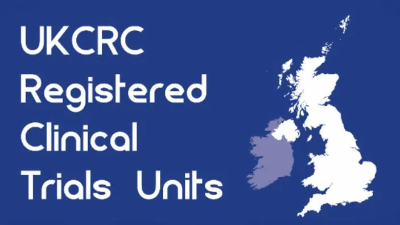
- Paediatrics
- Trials closed
Closing the loop in young people with type 1 diabetes in the home setting
An open-label, single-centre, randomised, 2-period cross-over study to assess the efficacy, safety and utility of real-time continuous subcutaneous glucose monitoring combined with overnight closed-loop glucose control in the home setting in comparison with real-time continuous subcutaneous glucose monitoring alone in adolescents with type 1 diabetes on subcutaneous insulin infusion pump therapy.
Research summary
Nocturnal hypoglycaemia is a serious complication of insulin treatment in subjects with type 1 diabetes (T1D) and it represents a critical problem in the management of the disease. Severe episodes of hypoglycaemia occurring overnight can potentially lead to seizures and coma and might play a role as a precipitating factor in cardiac arrhythmias resulting in the “dead-in-bed syndrome”. Night-time hypoglycaemia is particularly dangerous because the sympathoadrenal response to falling blood glucose concentration is blunted during sleep, thus reducing warning symptoms and arousal from sleep. As most episodes may go unrecognised, low blood glucose levels might be undetected and their frequency commonly underestimated. Moreover, recurrent unsuspected episodes of nocturnal hypoglycaemia might contribute to the onset of reduced awareness of hypoglycaemia, thus leading to a vicious cycle.
Nocturnal hypoglycaemia is a special concern in the paediatric population, where a high incidence has been reported by several studies. The awareness of the benefits that intensification of insulin treatment and strict glycaemic control may have on the onset of long-term complications has been shown to cause further increases in rates of hypoglycaemia in this young age. Risk of hypoglycaemia, especially at night, is the most feared adverse event among young people with T1D and their families and it may represent a major obstacle to the achievement of optimal blood glucose levels. The propensity to nocturnal hypoglycaemia is mainly due to relative or absolute therapeutic insulin excess overnight, which is associated with the non-physiologic nature of many insulin replacement regimens. For this reason, new therapeutic approaches that provide blood glucose-regulated insulin replacement might lead to improvements in glycaemic control without increased risk of severe hypoglycaemia.
The recent availability of real-time CGM enables users to view real-time glucose readings and receive alarms for impending hypo- or hyperglycaemia, thus facilitating appropriate changes in insulin therapy. Sensor-augmented insulin pump therapy combining real-time CGM with an insulin pump has been shown to be associated with improvement in HbA1c and reduction in hypoglycaemia in paediatric subjects with T1D. However further studies emphasised how the success with the use of sensor-augmented insulin pump therapy appears to be related to compliance. More recently, a multicentre clinical trial investigating the efficacy of CGM in a wide population of children and adults with T1D showed that children and adolescents had less benefit from the prolonged use of CGM in terms of HbA1c levels, possibly because in this age group the device was used less regularly.
The development of an artificial pancreas (AP), a system that combines glucose monitoring with computer-based algorithm dictated insulin delivery, may provide a solution and represent an additional realistic treatment option for people with T1D. The vital component of a closed-loop system often referred to as an artificial pancreas (AP), is a computer-based algorithm. Other components include a real-time continuous glucose monitor and an infusion pump to titrate and deliver insulin. The role of the control algorithm is to translate, in real-time, the information it receives from the glucose monitor and to compute the amount of insulin to be delivered by the pump.
The research we are conducting at the University of Cambridge is focused on the development of a closed-loop system for overnight glucose control in children and adolescents with T1D. The studies that have been performed so far employed the Model Predictive Control (MPC) algorithm, which estimates patient-specific parameters from CGM glucose measurements taken every 1 to 15 minutes, makes predictions of glucose excursion and calculates basal insulin infusion rates. The results obtained in previous studies in children and adolescents with type 1 diabetes showed that overnight closed-loop glucose control is safe, improves glycaemic control, and prevents nocturnal hypoglycaemia in laboratory settings. The next objective is to evaluate efficacy, safety and utility of the automated closed-loop insulin delivery for overnight glucose control in the home setting.
The main study objective is to compare real-time continuous subcutaneous glucose monitoring (CGM) combined with overnight automated closed-loop glucose control and real-time CGM alone in the home setting. This is an open-label, cross-over study and involves two 21-days-long home studies during which overnight glucose levels will be controlled either by a closed-loop system combined with a real-time continuous subcutaneous glucose monitoring (CGM) or by real-time continuous glucose monitoring alone, in random order. A total of 20 adolescents with T1D between 12 and 18 years of age will be recruited through the Outpatient Diabetic Clinic in the Department of Paediatrics, Addenbrooke’s Hospital and other Paediatric Diabetes Centres of East Anglia region, to allow for 16 available for assessment. They will all be on subcutaneous insulin pump therapy and will have proven competencies both in the use of the insulin pump and the Navigator CGM device will be verified. The primary outcome is the time with glucose levels between 3.9 and 8.0 mmol/L, as recorded by CGM. Safety evaluation comprises the tabulation of severe hypoglycaemic episodes.
Main inclusion criteria
-
The subject is between 12 and 18 years of age (inclusive)
-
The subject has type 1 diabetes, as defined by WHO for at least 1 year or is confirmed C-peptide negative
-
The subject will all have been insulin pump user for at least 3 months, with good knowledge of insulin self-adjustment as judged by the investigator
-
The subject willing to perform regular finger-prick blood glucose monitoring, with at least 4 blood glucose measurements taken every day
-
HbA1c ≤ 10 % based on analysis from central laboratory or equivalent
-
The subject is literate in English
-
Able to accommodate on site or in close proximity member(s) of study team for supervised closed-loop night(s)
Main exclusion criteria
-
Non-type 1 diabetes mellitus including those secondary to chronic disease
-
Any other physical or psychological disease likely to interfere with the normal conduct of the study and interpretation of the study results as judged by the investigator
-
Current treatment with drugs known to interfere with glucose metabolism, eg systemic corticosteroids, non-selective beta-blockers and MAO inhibitors etc
-
Known or suspected allergy against insulin
-
Subjects with clinical significant nephropathy, neuropathy or proliferative retinopathy as judged by the investigator
-
Total daily insulin dose ≥ 2 IU/kg/day
-
Pregnancy, planned pregnancy, or breast feeding
-
Prolonged use of any continuous glucose monitoring devices over the last 1 month prior the study
-
Severe visual impairment
-
Severe hearing impairment
-
Subjects using implanted internal pace-maker
Funders and sponsors
Chief investigator
Prof Roman Hovorka
Contact details
Clinical Trials Manager: Dr Paula Kareclas
Telephone: 01223 596473 | Email: [email protected]






